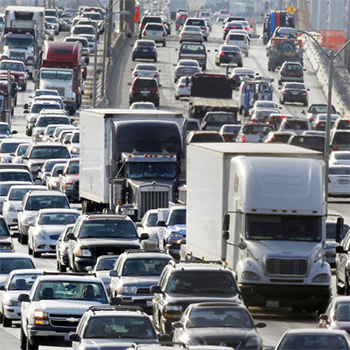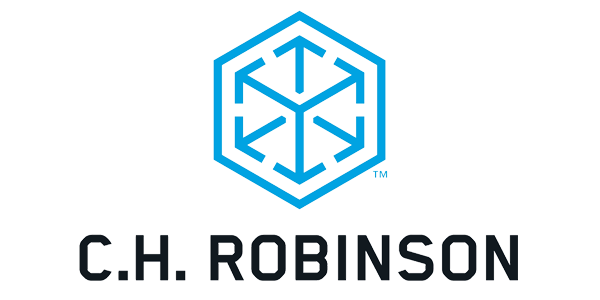Swimming Against the Congestion Current

Transportation managers deal with it and talk about it all the time, yet there is one vital aspect of this topic that they tend to overlook: how trucks idled by traffic snarls work against the fuel efficiencies that the industry is working hard to achieve.
If we could eavesdrop on the freight industry’s water cooler conversations, chances are that we’d hear a lot about traffic congestion.
Transportation managers deal with it and talk about it all the time, yet there is one vital aspect of this topic that they tend to overlook: how trucks idled by traffic snarls work against the fuel efficiencies that the industry is working hard to achieve.
More awareness of this conflict and the associated costs might help to persuade the industry to address infrastructure investment needs that are at the root of these delays.
It is no revelation that trucks sitting in traffic burn diesel needlessly and inflate fuel bills. But the problem goes deeper than that. The industry is rightly proud of the innovative programs being developed to improve fuel efficiency.
However, as we take a step forward with leaner vehicles, better load plans, and other fuel saving strategies, traffic congestion tugs us back a step by reducing the number of miles per gallon traveled. In effect, infrastructure deficiencies are driving this zero sum game.
Still unconvinced? Let’s take a look at some figures.
A hypothetical shipper has an annual freight spend of $10 million (see below). The company’s fuel costs amount to an estimated 30% of this expenditure, or $3 million. Diesel is priced at $2.93 per gallon, so the organization consumes just over 1,023,890 gallons of fuel annually. Assuming that the average fuel consumption of a truck is 6 miles per gallon, the shipper clocks 6,143,344 miles each year.

If we reduce the miles per gallon rate by just one percentage point to account for idle time in traffic, the adjusted mpg is 5.94. The change increases the amount of diesel consumed to slightly over 1,034,232 gallons, and adds $30,229 to Shipper A’s fuel bill.
These figures are for demonstration purposes only, but the fact that a mere one percentage point fall in fuel efficiency translates into a $30,000 cost should ring alarm bells. Fuel is a pass-through cost and represents approximately 30% of total costs (for more on this see Leveling the Surcharge Playing Field post), so real money is disappearing from the bottom line.
The charge becomes even more of an eye opener when the same reasoning is applied to a bigger freight operation where traffic-related delays are longer. Moreover, this calculation underestimates the actual cost, since items such as the time spent dealing with late shipments and building extra safety stock are not included. Also keep in mind that despite today’s sagging economy, freight volumes are expected to increase over the next decade or so, potentially introducing more congestion on the roads.
We need across-the-board investments in infrastructure to counter this trend, and allow the fuel economies now being introduced to take full effect. But first we need to raise awareness levels, and that requires the industry to come together and communicate to legislators just how urgent the need is for infrastructure investments.
How can we do this?
Transportation practitioners could be more diligent about bringing congestion issues - and particularly the cost of congestion - to the attention of their government affairs professionals. These people may or may not be aware of the implications; they are often more concerned with other matters such as environmental regulation, tax issues, and labor rules.
To some extent, this is a function of the way freight management has evolved over recent years. As operations are outsourced to third party providers, there tends to be less internal focus on transportation, particularly in other departments such as government affairs. If you’d like to learn about ways to participate and have your voice heard in Washington, check out C.H. Robinson’s recent blog post, How to Advocate for Your Interests in Washington.
In addition, the freight industry needs to become more engaged in the debate. C.H. Robinson is a founding sponsor of the U.S. Chamber of Commerce’s Transportation Performance Index, for example. The index correlates the way infrastructure performs to economic growth.
If the nation’s transportation infrastructure continues to deteriorate, traffic congestion will worsen and supply chain costs will rise further - even as our equipment and supply chain processes becomes more fuel efficient. Stationary trucks are not the only problem; even slowing down traffic racks up additional expense. As Kevin McCarthy argues in his post, Why Slow Driving is Not a Viable Route to Lower Fuel Bills, reducing the speed of trucks adds cost in several ways - for instance, by reducing vehicle utilization rates.
Let’s emphasize that these costs are not theoretical; companies pay every time a truck becomes ensnared in traffic, and our efforts to improve fuel economy are undermined.
So the next time you are at the water cooler, take the traffic congestion conversation to unfamiliar ground and make people aware of the true costs.
Article Topics
C.H. Robinson News & Resources
Q&A: Mike Burkhart on the Recent Nearshoring Push Into Mexico Q&A: Mike Burkhart, VP of Mexico, C.H. Robinson C.H. Robinson introduces new touchless appointments technology offering C.H. Robinson President & CEO Bozeman provides overview of key logistics trends and themes at SMC3 JumpStart 2024 C.H. Robinson touts its progress on eBOL adoption by LTL carriers and shippers Retailers Pivot Supply Chain Strategy, Seek Red Sea Alternatives C.H. Robinson announces executive hire to run new Program Management Office More C.H. RobinsonLatest in Transportation
Trucking Industry Pushes Back on Government’s Electric Mandates Maersk Sees Silver Lining in Red Sea Shipping Challenges Baltimore Opens 45-Foot Deep Channel Following Bridge Collapse El Paso Border Delays Cost Juarez $32 Million Per Day in Economic Losses Ranking the World’s 10 Biggest Supply Chains The Top 10 Risks Facing Supply Chain Professionals Walmart’s Latest Service: Ultra Late-Night Delivery More Transportation











